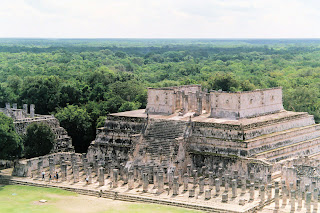Epic and Iconic pop culture imagery of this monument here:
The George Washington monument is one that speaks to the power of a new empire. Rising pointedly to touch the sky, it overtakes it's location. A mass of land surrounds it, however the monument cannot be missed for its austere and powerful simplicity. Accordingly, Farrar in her book Building The Body Politic, speaks of the relationship to power and the built environment by borrowing from Michel Foucault. Spaces over lap to assert a specified control over the public. This monument does just that. The spaces are three in nature, between words and things, To Foucault this was regarded as mythic metaphors and the material constructions to image these, like the confessional. Th Washington monument acts in the same way, a place where there is an overlapping of thought and construction to portray this thought. A metaphorical assertion of power of George Washington himself, and the Victory of the American Revolution of the civil war. The shape takes on a phallic image and presents the greatness of the powerful American resolve.








 Pyramid B Tula
Pyramid B Tula 








